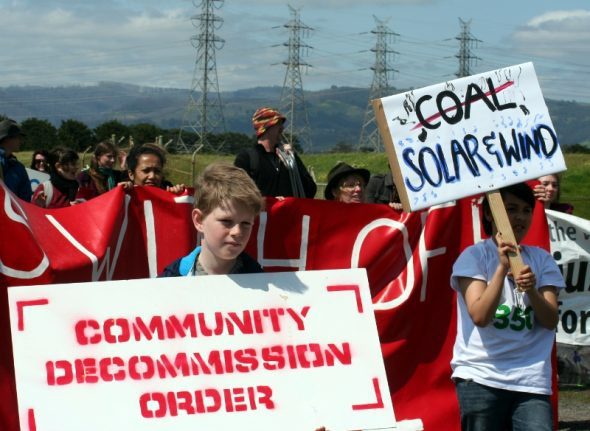In the past few days we have seen two states, Victoria and Queensland, announce cut-backs on action to reduce greenhouse gas emissions. They have been able to justify this by pointing out, correctly, that their actions would not cut Australia’s overall greenhouse gas emissions beyond the national target.
The Commonwealth Government’s Clean Energy Future scheme design is flawed. I, along with Richard Denniss from the Australia Institute, the Voluntary Carbon Markets Association and others have been pointing out this flaw and showing how it could be fixed, for over three years.
The problem is that if a state government, council, business or household voluntarily cuts its emissions beyond what it is legally required to do (for example, under building energy regulations), this simply frees up more permits for other emitters to use, so their efforts don’t cut the total amount of carbon emissions. But Canberra econocrats and politicians have simply turned deaf ears.
The frustrating thing is that this flaw is easily fixed. In fact, the Commonwealth Government has actually addressed this issue for forestry and agricultural activity through its Carbon Farming Initiative. Extra permits are issued for the carbon stored: these permits can be sold or retired, and count as “real” abatement. But the government has been determined in its resistance to applying a similar approach to energy efficiency, renewable energy, low emission energy and most waste management.
The solution is simply to put in place a mechanism so that when anyone – state governments, local councils, businesses and households – cut emissions voluntarily beyond what they’re required to do by laws, the appropriate number of carbon permits is cancelled.
State governments, councils, households and most businesses won’t normally be involved in the carbon trading scheme, but their extra effort does cut Australia’s overall greenhouse gas emissions. This should be reflected in the market: the total number of permits available should be reduced by an amount corresponding to the abatement they have voluntarily achieved. This reduces the number of permits available to other emitters, effectively tightening the national cap in proportion to the amount of voluntary abatement.
Why isn’t it possible for emissions reduction to operate this way? The rationale for this policy failure has never been made clear. One possibility is that policy makers felt that an extra mechanism would contaminate and complicate the theoretical “elegance” of their carbon trading scheme.
Another is that the government knows there is a lot of low-cost abatement available from sustainable energy and waste, and it wants to include the contribution of this abatement as part of achieving its target. If there is no mechanism to account for and recognise state government abatement, the Commonwealth government can claim those reductions as its own.
Yet another possible reason is that econocrats and politicians just don’t understand how to design a policy to mobilise community action on cutting emissions. Whatever the reason, the folly of this approach is now being seen: it has provided a convenient excuse for state governments to back away from action on climate.
The failure doesn’t just affect state government action. Already many businesses and local councils that are cutting emissions have been forced to turn away from supporting local emission abatement, to buy overseas carbon permits. They can’t use Australian abatement (from energy or most waste) projects to offset their emissions because they do not meet carbon accounting standards. So they would risk prosecution by the ACCC if they did try to take credit for supporting local abatement action. How perverse.
In turn, this means investment in local abatement industries and projects has been diverted overseas, just when we need to build this capacity. It also means we’re missing out on jobs growth and economic development. How bizarre.
It’s not too late to fix this problem. The mechanisms created for the Carbon Farming Initiative, Renewable Energy Target and proposed National Energy Saving Initiative can be adapted to track voluntary action that cuts emissions from energy and waste. Then well-intentioned local councils, businesses, and households could get due credit for their abatement efforts, and state governments would no longer have an excuse to avoid their responsibility to cut emissions. And a powerful new mechanism that empowers the community to cut emissions harder and faster would be unleashed.
All that’s needed is the political will and a bit of common sense.
Alan Pears is a senior lecturer in Global Studies, Social Science & Planning at RMIT University
This article was originally published on The Conversation – theconversation.edu.au. Reproduced with permission.










